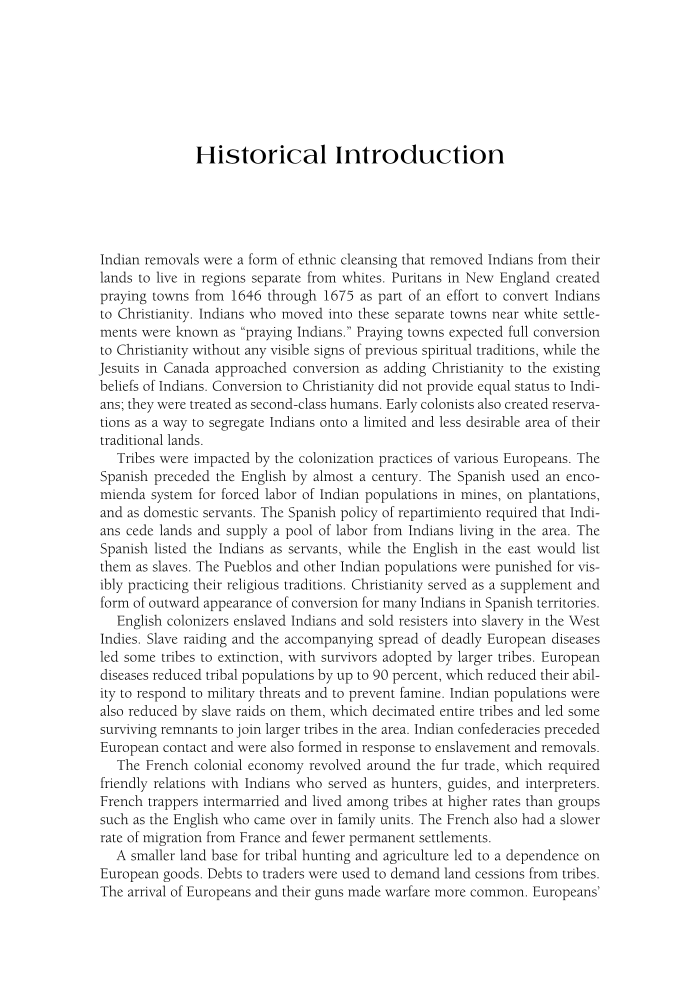Historical Introduction Indian removals were a form of ethnic cleansing that removed Indians from their lands to live in regions separate from whites. Puritans in New England created praying towns from 1646 through 1675 as part of an effort to convert Indians to Christianity. Indians who moved into these separate towns near white settle- ments were known as “praying Indians.” Praying towns expected full conversion to Christianity without any visible signs of previous spiritual traditions, while the Jesuits in Canada approached conversion as adding Christianity to the existing beliefs of Indians. Conversion to Christianity did not provide equal status to Indi- ans they were treated as second-class humans. Early colonists also created reserva- tions as a way to segregate Indians onto a limited and less desirable area of their traditional lands. Tribes were impacted by the colonization practices of various Europeans. The Spanish preceded the English by almost a century. The Spanish used an enco- mienda system for forced labor of Indian populations in mines, on plantations, and as domestic servants. The Spanish policy of repartimiento required that Indi- ans cede lands and supply a pool of labor from Indians living in the area. The Spanish listed the Indians as servants, while the English in the east would list them as slaves. The Pueblos and other Indian populations were punished for vis- ibly practicing their religious traditions. Christianity served as a supplement and form of outward appearance of conversion for many Indians in Spanish territories. English colonizers enslaved Indians and sold resisters into slavery in the West Indies. Slave raiding and the accompanying spread of deadly European diseases led some tribes to extinction, with survivors adopted by larger tribes. European diseases reduced tribal populations by up to 90 percent, which reduced their abil- ity to respond to military threats and to prevent famine. Indian populations were also reduced by slave raids on them, which decimated entire tribes and led some surviving remnants to join larger tribes in the area. Indian confederacies preceded European contact and were also formed in response to enslavement and removals. The French colonial economy revolved around the fur trade, which required friendly relations with Indians who served as hunters, guides, and interpreters. French trappers intermarried and lived among tribes at higher rates than groups such as the English who came over in family units. The French also had a slower rate of migration from France and fewer permanent settlements. A smaller land base for tribal hunting and agriculture led to a dependence on European goods. Debts to traders were used to demand land cessions from tribes. The arrival of Europeans and their guns made warfare more common. Europeans’
Document Details My Account Print multiple pages
Print
You have printed 0 times in the last 24 hours.
Your print count will reset on at .
You may print 0 more time(s) before then.
You may print a maximum of 0 pages at a time.




































































































































































































































































































